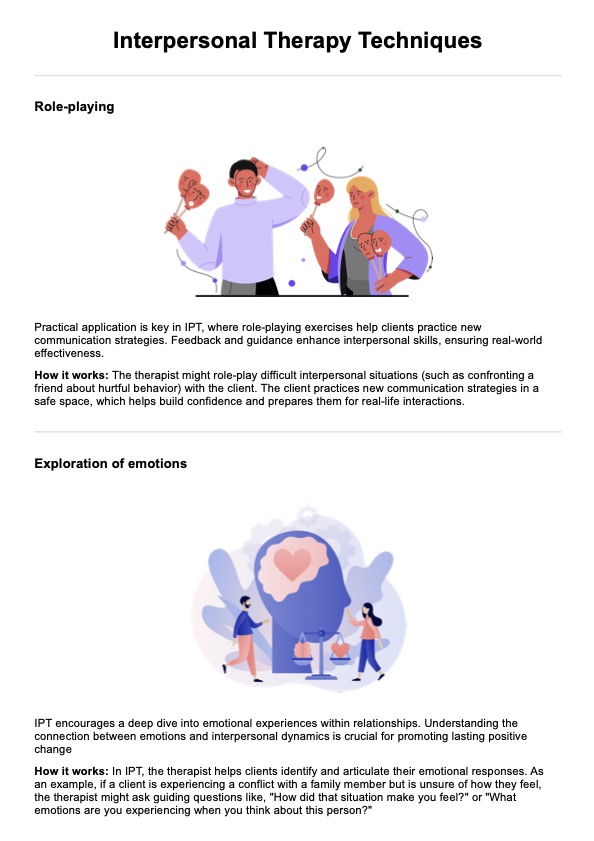IPT is generally a short-term therapy lasting between 12 to 16 sessions. However, the duration can be adjusted based on individual needs and progress.

Download a handout for Interpersonal Therapy Techniques. Get a free PDF resource you can use as a reference.
IPT is generally a short-term therapy lasting between 12 to 16 sessions. However, the duration can be adjusted based on individual needs and progress.
Yes, interpersonal therapy has shown effectiveness in addressing anxiety disorders, especially when rooted in interpersonal relationships. By improving communication and navigating relationship challenges, IPT contributes to anxiety symptom reduction.
IPT focuses specifically on interpersonal relationships and their impact on mental health. While other psychotherapies may have broader scopes, IPT's targeted approach makes it distinctive in addressing interpersonal conflicts, role transitions, and grief within the therapeutic framework.
EHR and practice management software
*No credit card required
Free
$0/usd
Unlimited clients
Telehealth
1GB of storage
Client portal text
Automated billing and online payments